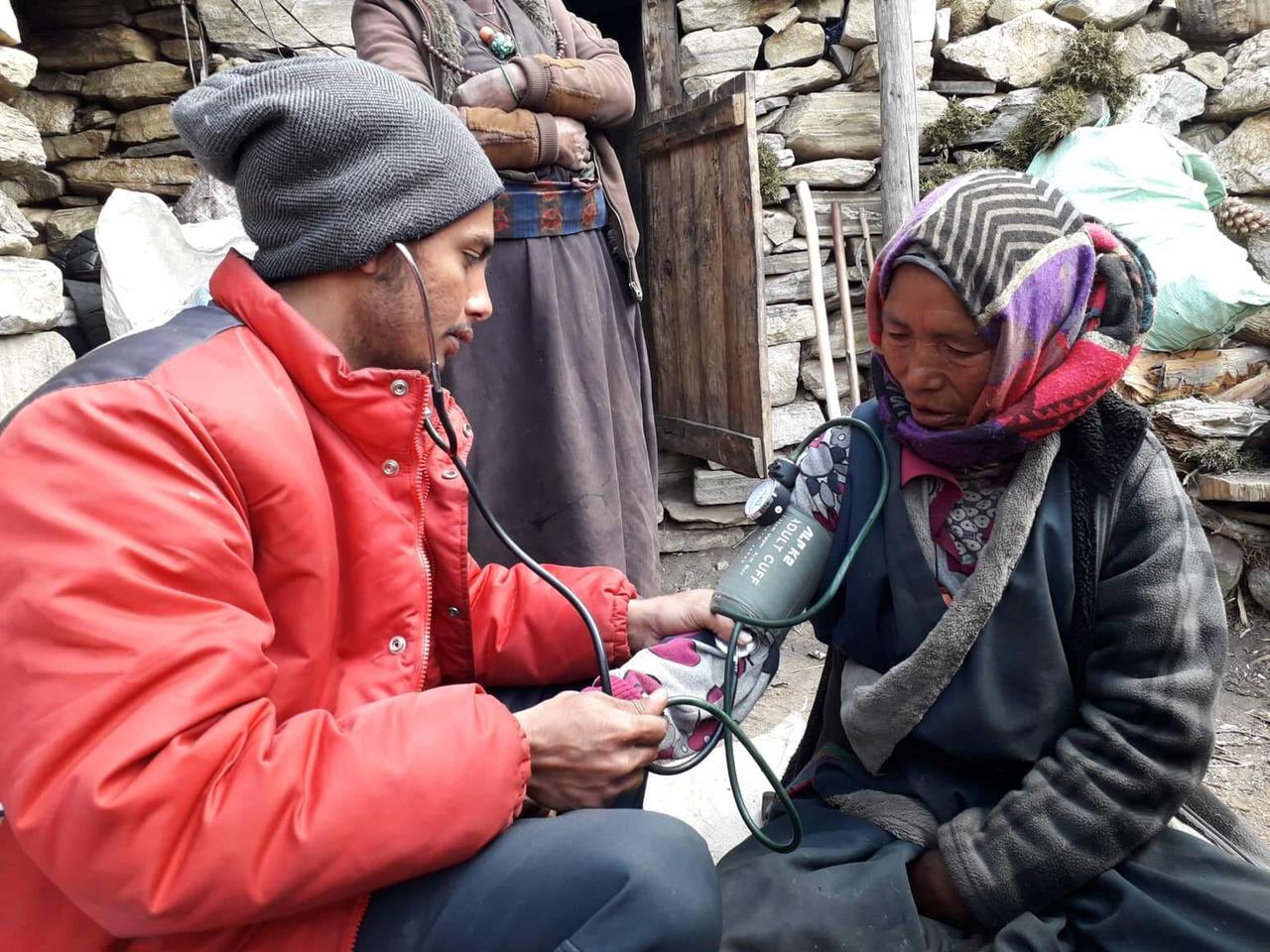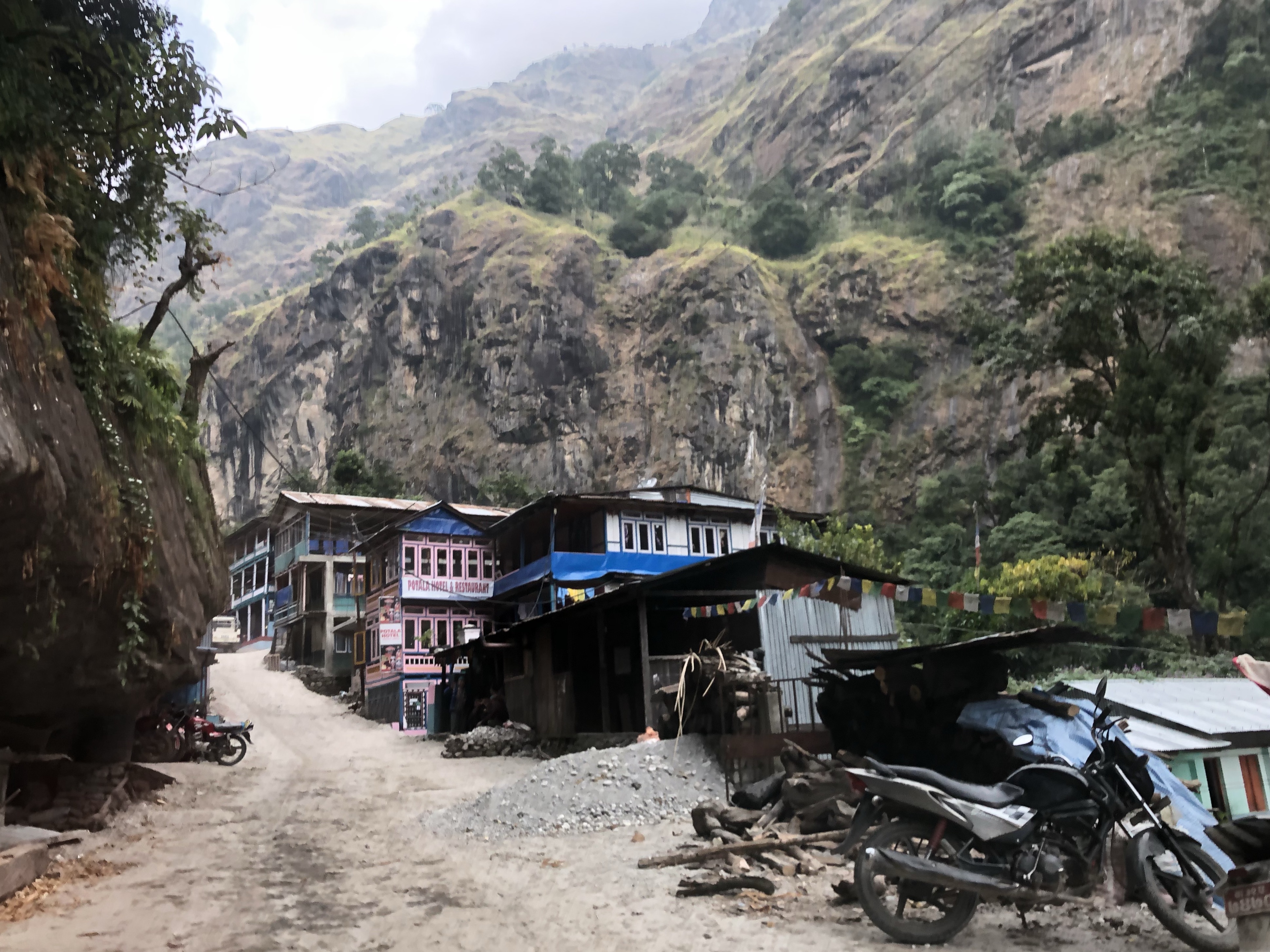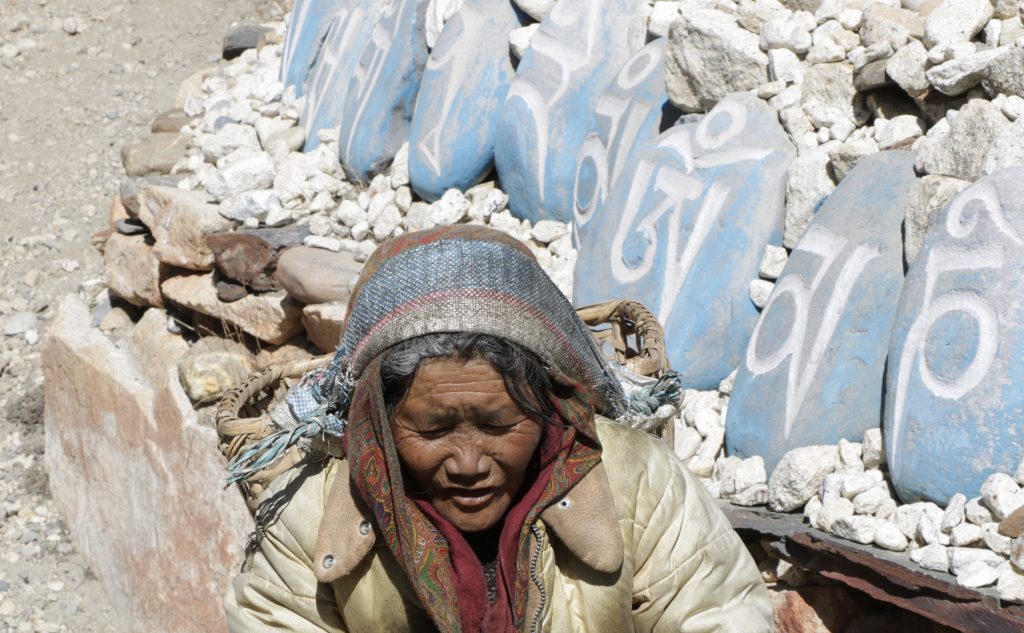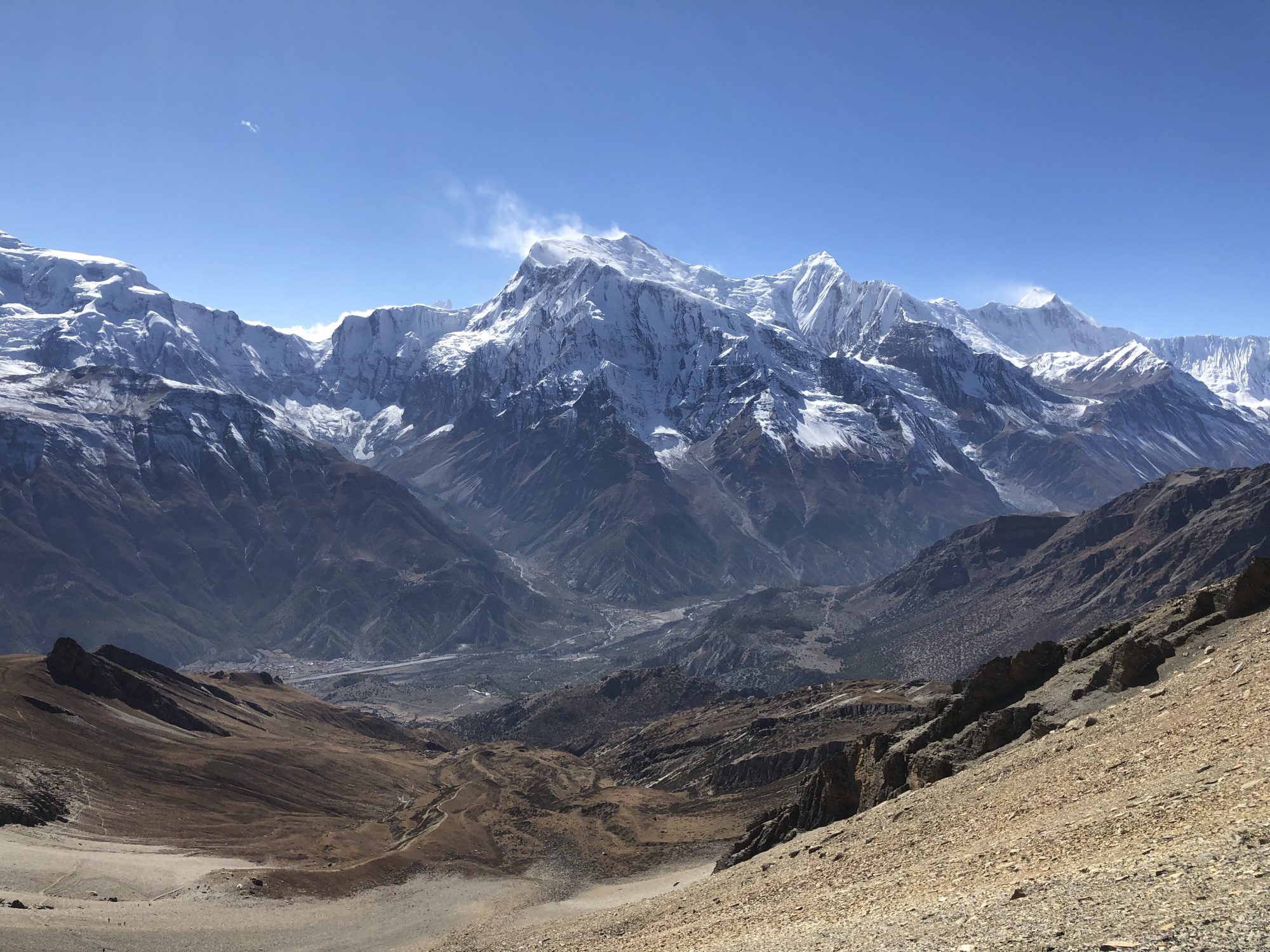Clinic in Nepal – 3rd birthday!
At the beginning of November 2021, the MEDyARTE funded medical clinic in the Nar Valley in Nepal will be celebrating its 3rd birthday!
Over the last couple of years, we have successfully managed to establish the facility and also gain the trust of the local population. In a country where groups of inhabitants are not only culturally distinct but also from various religious backgrounds, this is a significant achievement. Hindu doctors may not be accepted in Buddhist communities and modern treatment options are not always trusted by a population used to traditional Aamchi medicine. However, Mandip, our health assistant, has managed to assimilate himself wholly into village life.
We faced many challenges in setting up this clinic. The first was finding a Health Assistant brave enough to spend a year at an altitude of 4300m, in complete isolation from other health services and in temperatures often well below zero. Others included organising deliveries of medication and equipment on donkeys, which are the only feasible form of transport, and having to reach patients on foot in remote villages in emergency situations.
Despite all the difficulties the clinic is flourishing. Patients are happy, extremely grateful for its existence and hope for further developments such as an x-ray machine and maternity services.
Unfortunately, the COVID pandemic has hindered some of our plans which included organising a dental camp as well as setting up a diagnostic service and starting population treatment of gastritis, the most prevalent medical problem in the area. We hope that once again, these objectives can become realistic over the next couple of years.




Second Year of our Clinic in Nepal
The Medical Clinic in the village of Nar in Nepal has started the second year of its existence.
The first year has been difficult from many perspectives. The health care system in Nepal is significantly different from the English one, and the medicines and treatment regimens used are often also different. We had to resolve the logistical difficulties of finding the right Health Assistant for the post, delivering the equipment and medication to the clinic which is set at 4000m, and supervising the clinic’s activity.
And then COVID arrived and made things significantly more challenging for everyone. Nepal, similarly to many other countries in the world, was under lockdown conditions, with restrictions in mobility around the country as well as reduced imports of goods from the outside. The cost of medications has risen tenfold as a result!
Thankfully, the inhabitants of Nar Pho valley have been very lucky and have not had any cases of the coronavirus in 2020. The clinic saved the lives of many who would ordinarily have died as a result of infections throughout the winter period. The population was extremely grateful for the support the clinic offered.
In November 2020 we appointed the new Health Assistant who will work in the Clinic for the following year. Mandip has come highly recommended and with great references. He initially spent a month in a hospital in Manang, at the bottom of Nar Pho valley, under the supervision of Choden who is responsible for the day to day running of the clinic, to acclimatise and learn about the most commonly encountered problems in the local population. He then trekked up to the Nar Village Monastery where the clinic is located. He will spend the entire winter there before he will have a chance to walk down again and report on progress.


On the left: Mandip in front of the Manang hospital; right: on his way to the clinic

Choden enjoying the beauty of her birth place ( near Manang)
Opening of Clinic in Nepal
The medical clinic serving the population of the highest villages in Nepal is now officially open! It was the most amazing, harrowing, exciting, exhausting and unforgettable experience of my life!
We started our venture in Kathmandu. Contrary to my expectations, this turned out to be a major Asian city full of cars, people, pollution, crumbling buildings, temples and energy. There is no time here for stopping and thinking as you might get run over by a motorcycle overloaded with a family of four including a baby, or a speeding bus, full to bursting, on the opposite side of the road from expected. As far as I could gather there is only one traffic rule in Nepal, a vague notion that one should keep to the left side of the road. Thereafter the priority belongs to the strongest and the biggest.

Busy streets of Kathmandu

View of Kathmandu from Swayambhu Temple
It is incredible however how this city, which was significantly damaged in an earthquake in 2015, has picked itself up from its knees and continues to be a bustling beehive. The most impressive are the historic sites such as temples and palaces which in all locations are now nearly fully renovated and look as if they were never touched by the disaster. The only proof of the recent past seems to be present in the scattered photographs proudly displayed on the information boards and the occasional still-persistent scaffolding, while the intricate carvings of the monuments astound the flocking visitors.

Patan Durbar Square, one of the districts of Kathmandu
Kathmandu is one of the two main cities in Nepal, which offer all types of medical care as well as the full spectrum of medical supplies. The purchase of medical supplies was our most important task here. Choden Lama, a Health Assistant who has been responsible for the project on the Nepalese side, managed to agree special rates with a pharmacy to obtain medicines and equipment to stock our clinic in the mountains for the entire year. Soon enough we were loading boxes of drugs, accessories needed for minor operations, products for cleaning and disinfection, an oxygen concentrator and donations from the UK onto the back of the jeep, creating a rather large and precarious looking mountain. Such a small issue as excess luggage, however, has never stopped a local Nepalese driver from travelling 12 hours into the heart of the Himalayas. A big tarpaulin sheet and several pieces of rope later and I was reassured that our venture would pose no problems.
 Our jeep in Besisahar, the last town before the end of the road
Our jeep in Besisahar, the last town before the end of the road
The journey started on a tarmacked road winding up endlessly along hairpin bends, accompanied by – to my ear relentlessly the same – Indian music blasting from the car radio at 100 decibels, with 6 of us squashed into the 5-seater car. The road surface tended to change at times into massive mogul fields navigated extremely expertly by our driver. More than once we came across parts of the road which subsided or frankly disappeared due to landslides during the recent monsoon season; this however did not seem to faze in the least any of the drivers. They continued to race in both directions at the top speed available in their particular car, overtaking one another on blind bends, believing beyond any doubt in the fact that the blast of the horn was going to secure them safe passage over the following 200 yards. The only thing I could do was to close my eyes and pray that the constantly turning miniature Buddhist prayer wheel on the dashboard of our car was going to keep us safe.
After the first 5 hours of our journey, however, the road suddenly turned into a dust track which rapidly started to climb into the mountains. The track was definitely designed for the width of one car and was carved out of the solid rock on the mountainside with a nearly permanent precipice, often several hundred meters down, present on our side.
 Dust track forming the start of the Annapurna circuit
Dust track forming the start of the Annapurna circuit
Massive rocks often jutted out in the middle of our path; at times we had to traverse major streams and navigate around huge holes while negotiating an incline nearing 45 degrees. It was breath-taking enough without any additional challenges, but when we had to pass jeeps from the other direction on the bends which required the driver to do a 5 point turn I felt like requesting permission to walk instead! On route we had to stop 5 times to report to the local police with our permits before proceeding any further. Eventually, after 13 hours of nearly continuous travel, at 6pm just after sunset, we arrived at our final destination, the village from which we would have to walk on foot for the following three days to reach the clinic site.
 Village of Chame, the end of our journey by jeep
Village of Chame, the end of our journey by jeep
I will not hide that I had a feeling of great relief on hearing that we had arrived all in one piece and without losing a single box of the precious cargo on the way. We were now at 2600m altitude and the temperature had dropped from 24C in Kathmandu to around zero. The basic accommodation available in the village did not offer any heating, hot water or sit-down toilets but we were delighted to climb into our sleeping bags and listen to the silence. The next day at 5.30am we were to start our strenuous trek, while the medication was loaded carefully onto the donkeys for the journey up to the clinic later the same morning.
 Walking trail to Meta, carved out of the rock on the right side of the valley
Walking trail to Meta, carved out of the rock on the right side of the valley
Several weeks of hard training which I undertook back in London before this expedition really paid off now. The trek took us steeply uphill, ascending 1000m in altitude the first day and 800m the following, requiring between 9 and 12 hrs walking each day. This was probably the most strenuous experience I have ever participated in. The temperature gradually started to drop further, making us put on additional layers of clothing, scarves, hats and gloves. We were surrounded by absolutely stunning, ever-changing scenery: starting lower down with bamboos and silver birches covered with beautiful golden autumn leaves, turning higher up into small thorny bushes all in red which I nicknamed “fire bushes” and then eventually giving way to patches of grass and increasing areas of sheer rock.
The further I went, the more frequently I wondered how it was possible to survive in this environment. Apart from the occasional flocks of goats and groups of yaks there was just nothing there. In the middle of the day the warm sun would make us smile and tease us out of our winter gear but this was only a very brief spell in the middle of the day.
 One of the many suspension bridges on our way
One of the many suspension bridges on our way
 Yaks, despite looking docile and friendly can be very aggressive
Yaks, despite looking docile and friendly can be very aggressive
 Trail to Phu village at 4080m
Trail to Phu village at 4080m
In the mornings the shadows cast by the enormous mountains on both sides of the valley would make us shiver with cold and the same would happen in the early afternoon. The nights were something else altogether. The temperature would drop to well below freezing, forming ice on the fast-flowing mountain streams and stopping the only functioning waterpipe in the overnight accommodation from working. Everybody would huddle around the fireplace in the kitchen waiting patiently for a mug of hot water or butter tea and Dal Bhat meal (including plain rice, a few lentils in a watery sauce and a small amount of potato plus onion in a curry sauce).
 Welcome warmth from the kitchen fire
Welcome warmth from the kitchen fire
 Nepalese staple diet
Nepalese staple diet
The tiny bedrooms furnished only with simple beds did not even have a nail to put any of the clothing on. I was counting my lucky stars that I had brought with me two sleeping bags which I put one inside the other but even then, I still struggled to warm up.
After two days of trekking we reached the village of Phu at 4080m which was going to be one of the main beneficiaries of the clinic we were opening.
 Phu village
Phu village
 View overlooking Phu village from the Tasilakang Gompa
View overlooking Phu village from the Tasilakang Gompa
When planning this trip, I made a conscious decision that I wanted to visit all the villages in the valley to get a good understanding of the topography and challenges facing these communities. The inhabitants of Phu have been diminishing in numbers over the recent years due to the challenging living conditions. I am not surprised why! On my part the altitude sickness struck me quite badly: terrible headache, severe nausea, significant difficulty breathing after even a few steps, oxygen saturation of 85%. This kind of result in a hospital in the UK would indicate an immediate need for oxygen treatment. No such luck in Phu. Thankfully, I had some mountain sickness medication with me and I was well enough to be able to sit and observe the daily hustle and bustle of the village: unloading the horses which brought supplies from the village lying two days down the valley, cooking, spinning yarn, washing children in freezing cold water, sieving grain for the local mill, repairing the stone walls of dwellings.
 Children in Phu village
Children in Phu village
 Spinning thread from yak wool
Spinning thread from yak wool
 Sieving grain, ready for the mill
Sieving grain, ready for the mill
Everyone was extremely busy but… no school, no doctor, no factory, no office, no bus, no aeroplane, no shouting, no crying, no demanding, no….
Around 200m above the village there was a beautiful old monastery and stupa. I saw a very old lady with a WALKING FRAME! climbing up there to pray.
 Elderly lady at the Gompa 200m above Phu village
Elderly lady at the Gompa 200m above Phu village
Knowledge that the doctor had arrived in the village spread rapidly and I was asked to see a man with a fractured thumb. When I told him that he should strap the finger to prevent movement and allow healing for a minimum of 2 weeks …he laughed at me. “I need to work,” he said. “I cannot be walking around with a strapped thumb!”
After a day’s rest in Phu we started our descent to Nar Phedi Monastery which lies in the centre of the valley and where our clinic was going to be set up. Fortunately, the Monastery is at an altitude of 3600m which meant that I was able to at least partially recover from the altitude sickness. The location of the Monastery is truly spectacular.
 Nar Phedi Monastery where the clinic is based
Nar Phedi Monastery where the clinic is based
By the time we got there most of the equipment and medication had already been unloaded. The small stone clinic building with two rooms, one for the waiting patients and the pharmacy and the other for consultations, was really more than I had expected in this location. I was absolutely delighted.
 In front of the clinic building.
In front of the clinic building.
From the left: Thomas (MEDyARTE Trustee), Milan (Health Assistant employed by MEDyARTE for this year), Choden (Health Assistant and our Nepalese partner responsible for organising the clinic), Gosia (Founder of MEDyARTE Charity)
The great news was that the location of the clinic turned out to be equidistant from the two main villages in the valley and was in reasonably close proximity to 3 other smaller ones. As it is based on the site of a Monastery it can provide overnight accommodation as well as a hot meal for the patients. The monk in charge there is extremely forward thinking and fully supportive of the clinic. He is one of the two Partners on the Nepalese side of our venture. The clinic will provide free medication and treatment to all the local population; additionally, any tourists or porters visiting will be able to obtain medical care here as well. It is staffed by a Health Assistant funded by us who will permanently reside at the Monastery.
We had a great time finalising the organisation of the clinic, and teaching the Health Assistant how to use the various pieces of equipment. A fantastic spirit of camaraderie developed which is so important in building up mutual trust and understanding.
 Unpacking of medication and equipment in the clinic
Unpacking of medication and equipment in the clinic
 Learning how to use glucometers donated by Dorking Medical Practice and Epsom Hospital in Surrey. From the left in the front row: Lama in charge of the Monastery, Choden, Milan and Gosia, at the back Mingmar our porter and Mingmar our guide.
Learning how to use glucometers donated by Dorking Medical Practice and Epsom Hospital in Surrey. From the left in the front row: Lama in charge of the Monastery, Choden, Milan and Gosia, at the back Mingmar our porter and Mingmar our guide.
 Examination couch in the clinic
Examination couch in the clinic
 Milan trying out the new blood pressure machine donated by Epsom Hospital in Surrey
Milan trying out the new blood pressure machine donated by Epsom Hospital in Surrey
The following day at dawn we were off again, this time to the village of Nar, for the official opening ceremony of the medical clinic. Nar is the largest village in the area which incidentally is also the highest village in Nepal at 4200m.
 View of Nar village at the end of the valley and terraced fields at 4200m
View of Nar village at the end of the valley and terraced fields at 4200m
To mark this amazing event, three Health Assistants travelled along with me, who were going to run a clinic for a day in Nar with my support. From the moment we arrived at the village a long queue of potential patients formed in front of the small community building.
 Nar village hall where we held a medical camp to celebrate the official opening of the Nar Phedi Monastery Clinic
Nar village hall where we held a medical camp to celebrate the official opening of the Nar Phedi Monastery Clinic
 Some of the patients with Milan, the Health Assistant employed by MEDyARTE Charity
Some of the patients with Milan, the Health Assistant employed by MEDyARTE Charity
And throughout the day they continued to come… with cataracts, fractures, extremely high blood pressure, gastritis, female problems, dental problems…. just an overwhelming need for medical attention. These people had often not seen a doctor for several years despite persistent, severe symptoms. It was just too far and too difficult for them to even consider travelling to see a doctor. The other part of the problem is that after getting down to see a doctor, treatment would normally need to be paid for, or a further visit to a hospital in Kathmandu would be required. The people here simply cannot afford it. The experience provided by the medical clinic in Nar puts any problems we ever had or might have into perspective.
 Checking for cataracts
Checking for cataracts
Imagine a 70-year-old lady who lost the sight in both eyes two months previously as a result of undiagnosed glaucoma, travelling 2 days on foot, 2000m down to see a doctor…hopeless, shocking, unbelievable that people still live in such conditions in the 21st century.
After a day and a half in Nar, with great regret we had to leave in order to catch our plane back to London from Kathmandu. We took just a small shortcut over the Kang-La pass at 5320m, requiring a 1100m ascent and 1700m descent on the other side to the nearest accommodation for the night. But boy, was it worth it!!! All three peaks of Annapurna in full glory!
 Exuberant crew at Kang-La pass
Exuberant crew at Kang-La pass
 Absolutely stunning view of three peaks of Annapurna from Kang-La Pass
Absolutely stunning view of three peaks of Annapurna from Kang-La Pass
And the clinic…
Everyone in the entire valley was extremely grateful and happy to hear the news of the clinic opening in the Nar Phedi Monastery. I am very hopeful that our effort will make a real difference to this community, but the task is not complete. I would love to address some very specific issues which seem to plague the inhabitants of the Nar Phu Valley: gastritis, dental issues, cataracts, lack of preventive treatment. This is going to be the next stage of our project!
If you wish to help please donate through the website and add a note on your donation “Clinic in Nepal”. Thank you for your support.
 The opening ceremony
The opening ceremony
More pictures see here
NEPAL – medical clinic in the Himalayas

We have set up a medical clinic in one of the most remote villages in Nepal. The village of Nar lies at an altitude of 4110m in the northwesternern part of Nepal and has a population of 550 people. In the vicinity there is also a village called Phu with 350 inhabitants along with smaller settlements of Metha, Zunam, Chague and Kang. The people there don’t have access to any health facilities or other basic needs such as education, running water and sanitation.
Narpas, the local people, depend on cattle rearing and subsistence agriculture as well as the harvesting of “yarsa”. “Yarsa” which has been used in Traditional Chinese Medicine for 2000 years is the caterpillar fungus which is a highly prized tonic, touted for its ability to increase energy and vitality, strengthen the lungs and kidneys, treat cancer and asthma, and, perhaps most famously, cure impotence and boost libido — it’s supposed aphrodisiac effects earning it the nickname “Himalayan Viagra.”
It takes more than two and half days on foot to walk from the nearest town of Chame, through a dense forest along treacherous trails to reach the villages. Narpas have to carry all supplies including food and household goods on their backs. Chame is also the closest place with a medical clinic and a hospital.

